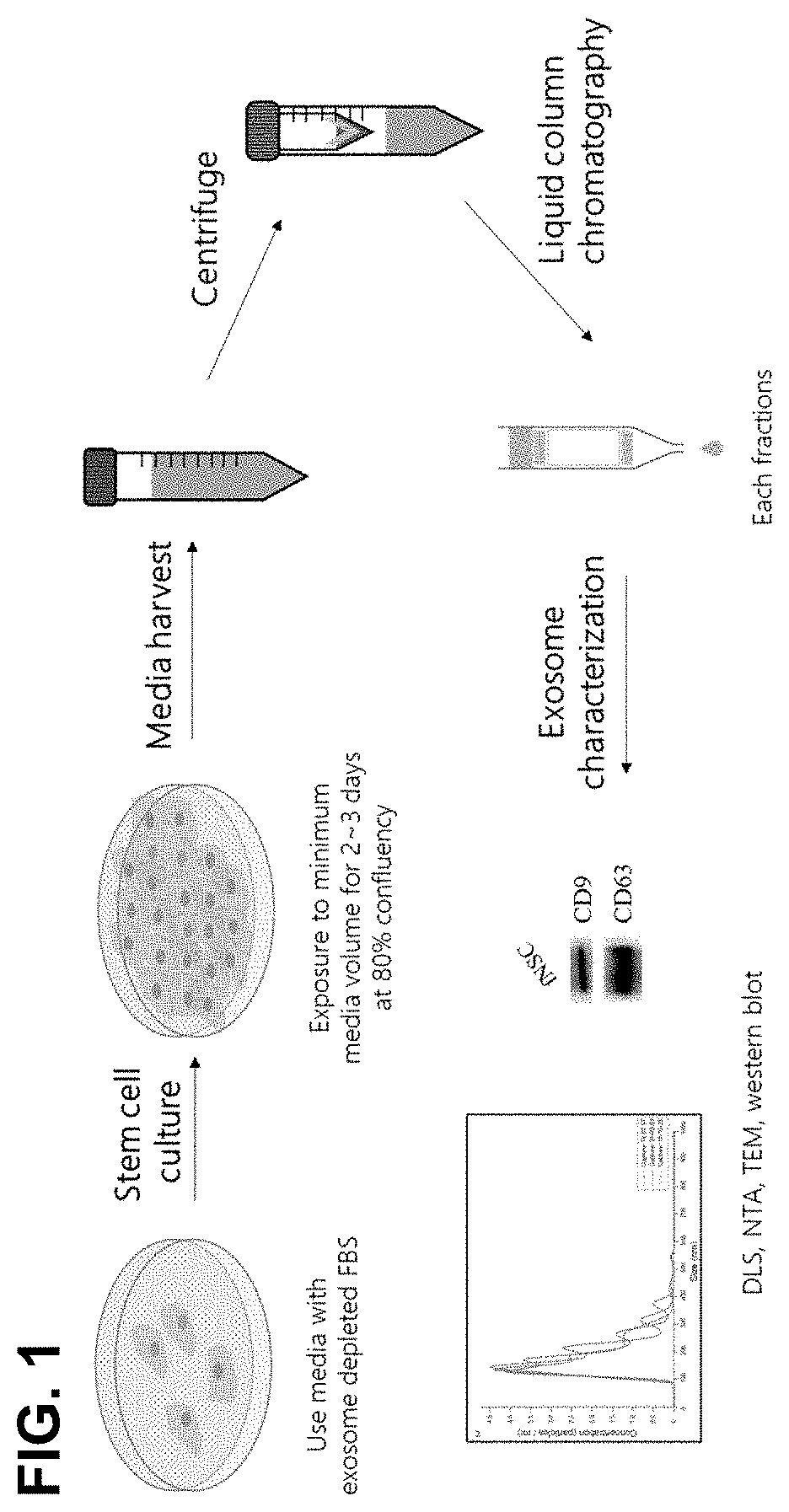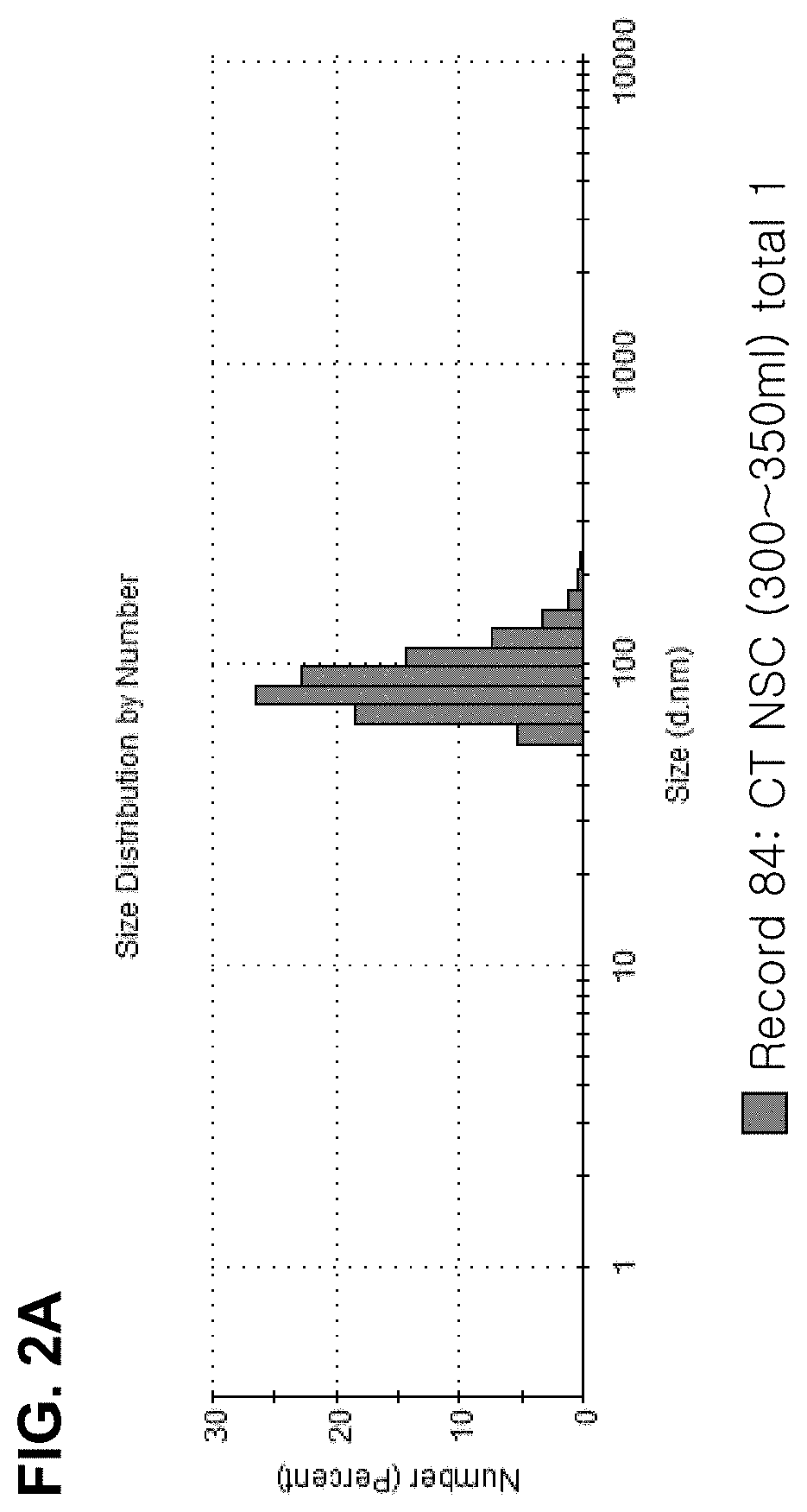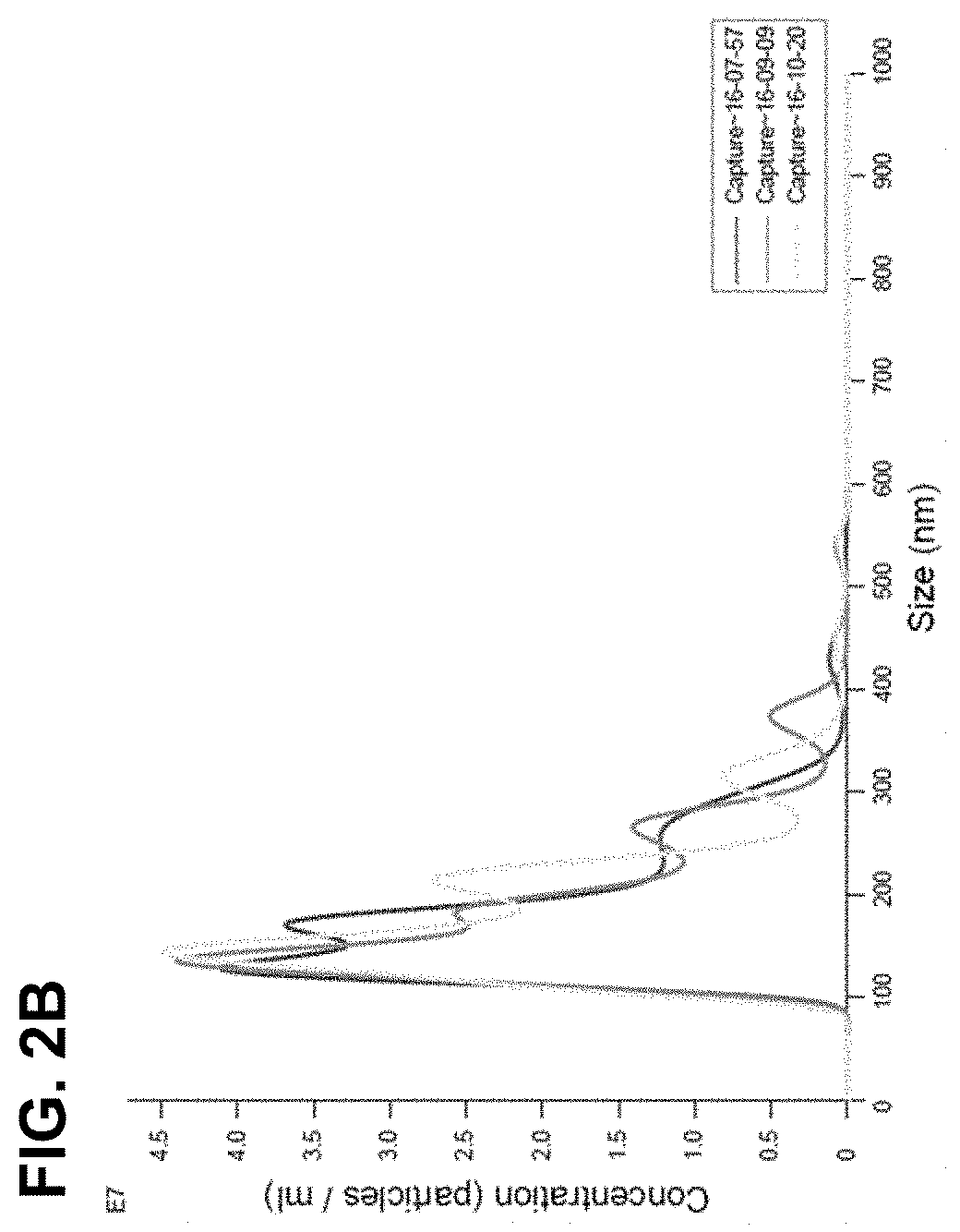Pharmaceutical composition for treatment of atopy containing exosomes derived from neural stem cells
a technology of exosomes and pharmaceutical compositions, applied in drug compositions, peptide/protein ingredients, dermatological disorders, etc., can solve the problems of reducing immune resistance, adversely affecting the growth and development of children, and excessive infiltration of dendritic cells presenting antigens
- Summary
- Abstract
- Description
- Claims
- Application Information
AI Technical Summary
Benefits of technology
Problems solved by technology
Method used
Image
Examples
example 1
on of Neural Stem Cell-Conditioned Medium
[0077]A cell line was obtained by immortalizing adult neural stem cells (NSCs) isolated from a ventricular zone of a fetal brain. 14-week-old fetal neural cell tissue was separated into single cells by treatment with a solution containing 0.1% collagenase and 0.1% hyaluronidase at 37° C. for 1 hour and treatment with 0.05% trypsin-EDTA for 2 to 3 minutes, and then neural stem cells were isolated therefrom by FACS using neural stem cell-specific markers (CD45− / CD133+ / CD34−). The cells were cultured in human neurosphere culture medium containing N2 supplements, 0.2 mg / ml heparin, 20 ng / ml bFGF (basic fibroblast growth factors), 20 ng / ml EGF (epidermal growth factor) and 10 ng / ml LIF. After 10 to 14 days, the formed neurospheres were separated into single cells by treatment with collagenase, and v-myc gene was transduced into the cells by a retroviral vector, followed by antibiotic screening. The resulting cells were cultured in non-inducing med...
example 2
of Neural Stem Cell-Derived Exosomes
[0078]The immortalized neural stem cells obtained in Example 1 were dispensed in a 150 mm culture dish at a density of 5×105 and cultured. When a confluence of 80% was reached, 13. 5 ml of culture medium was added and the cells were cultured in an incubator at 37° C. under 5% CO2 incubator for 2 days, and then the culture medium was collected. The collected culture medium was centrifuged at 10,000 g for 30 minutes at 4° C. to remove cell debris. The remaining medium was filtered through a 0.22 μm bottle top filter, and concentrated by centrifugation using an Amicon 100K tube at 5,000 g and 4° C. for 15 minutes. The concentrated medium was applied to a column packed with Sepharose 2b beads at a maximum loading volume of 500 μl per application, and extracellular vesicles were collected according to size by a liquid column chromatography method. The column was sufficient washed twice with autoclaved PBS, and then 500 μl of the sample was applied to t...
example 3
ation of Anti-Inflammatory Effect of Neural Stem Cell-Conditioned Medium
[0079]The human keratinocyte cell line HaCaT (ATCC) was seeded into a 12-well plate at a density of 2.5×104 cells per well and treated with each of 10%, 50% and 100% neural stem cell-conditioned media for 48 hours. Then, the cells were treated with TNFα (10 ng / ml) and IFN-γ (10 ng / ml) for 6 hours to induce inflammation, and the cells were washed with PBS, and then harvested by treatment with trypsin-EDTA. Next, the anti-inflammatory effects of the neural stem cell-conditioned media and the exosomes derived from the neural stem cells were examined by real-time qPCR. When inflammation was induced with TNFα (10 ng / ml) and IFN-γ (10 ng / ml), the mRNA expression levels of the inflammatory cytokines IL-6 and TNFα and the chemokines TARC, RANTES and MCP-1 functioning as chemotaxis triggering immune cells were analyzed.
[0080]As a result, as can be seen in FIGS. 3A-3E, it could be confirmed that the expression levels of t...
PUM
| Property | Measurement | Unit |
|---|---|---|
| Size | aaaaa | aaaaa |
| Composition | aaaaa | aaaaa |
Abstract
Description
Claims
Application Information
 Login to View More
Login to View More - R&D
- Intellectual Property
- Life Sciences
- Materials
- Tech Scout
- Unparalleled Data Quality
- Higher Quality Content
- 60% Fewer Hallucinations
Browse by: Latest US Patents, China's latest patents, Technical Efficacy Thesaurus, Application Domain, Technology Topic, Popular Technical Reports.
© 2025 PatSnap. All rights reserved.Legal|Privacy policy|Modern Slavery Act Transparency Statement|Sitemap|About US| Contact US: help@patsnap.com



